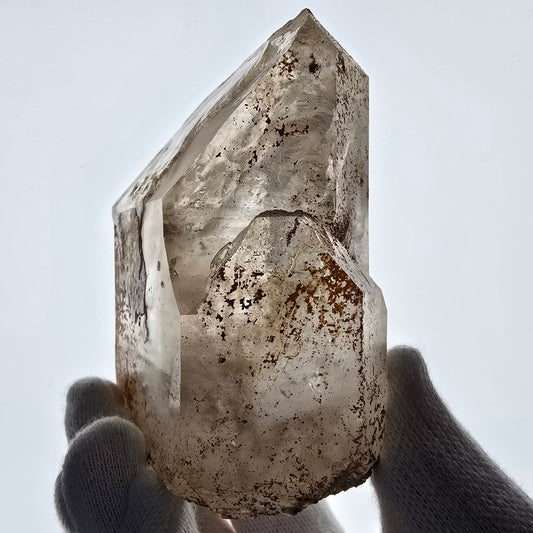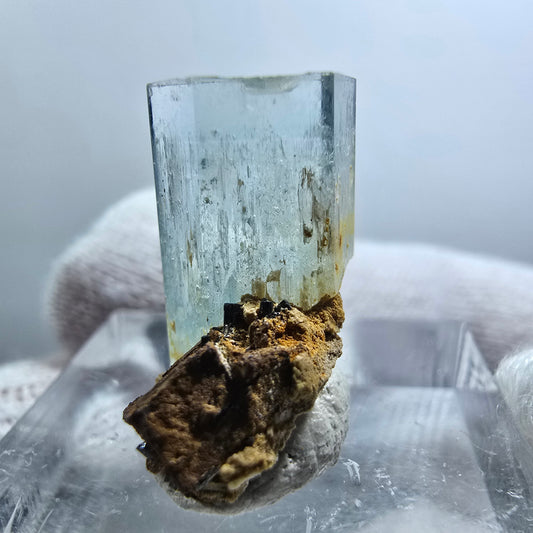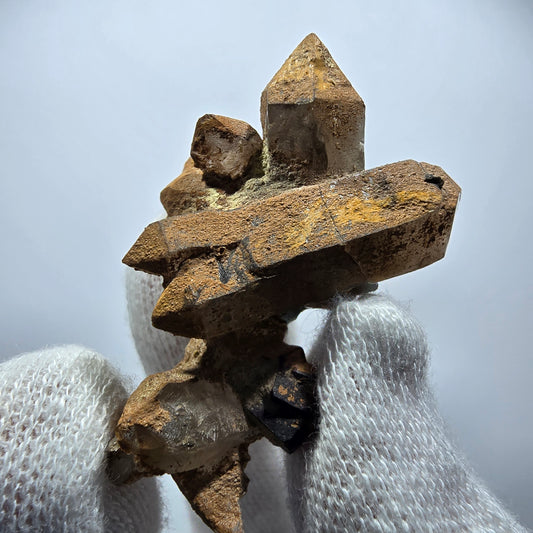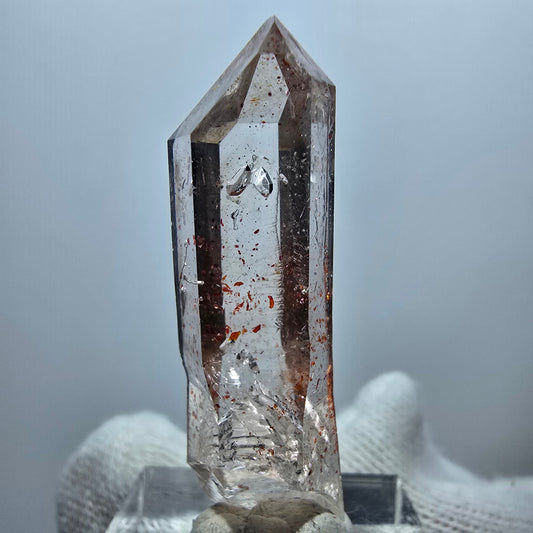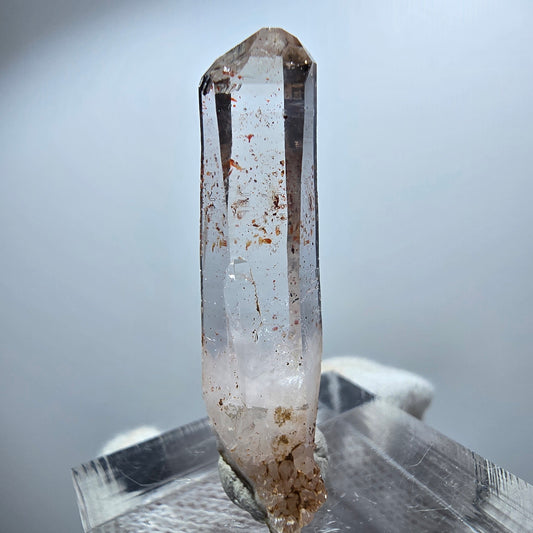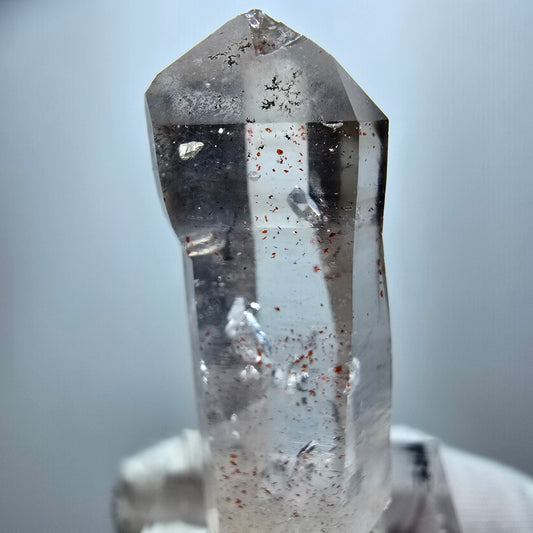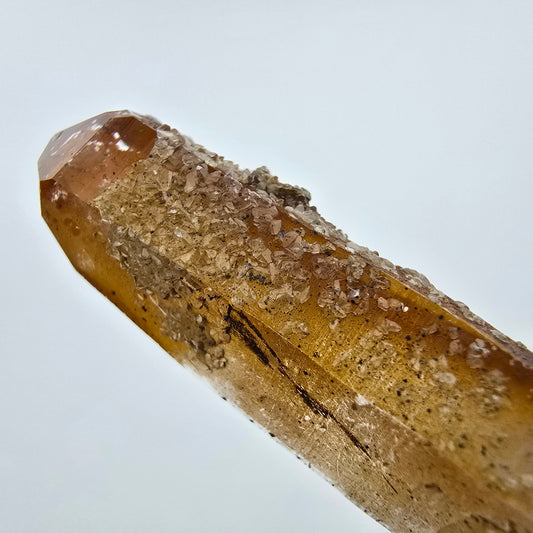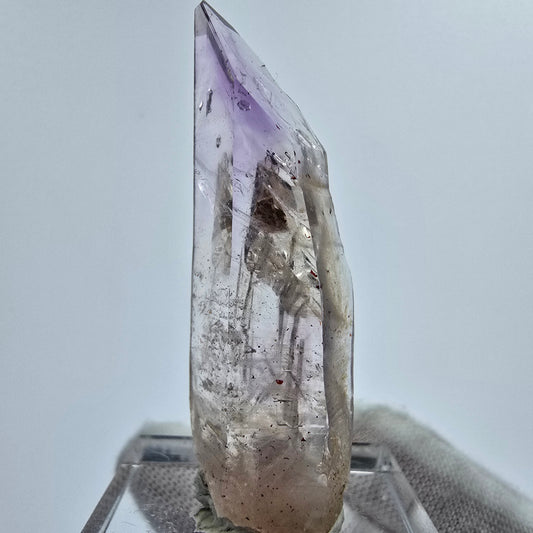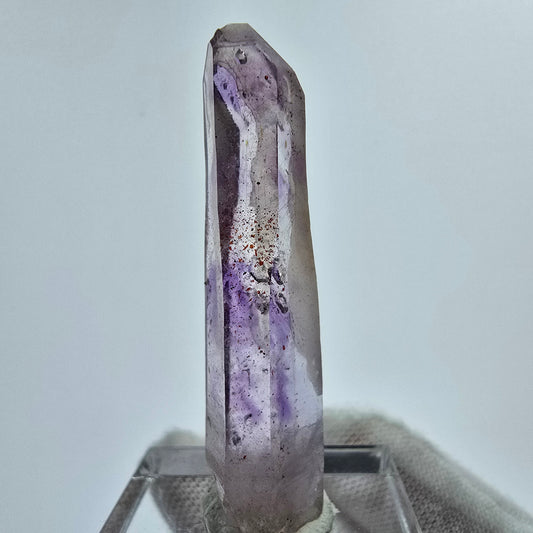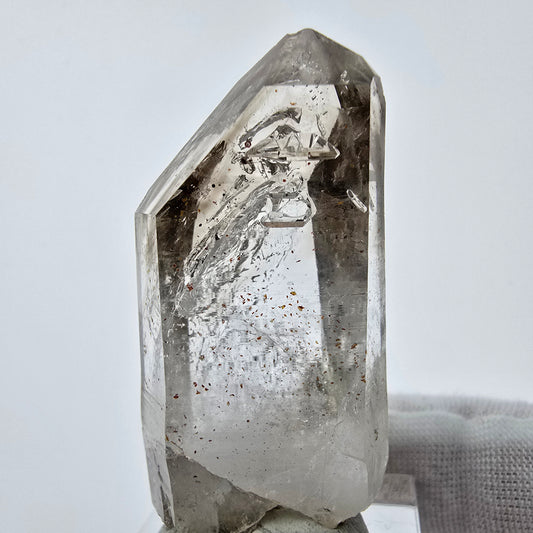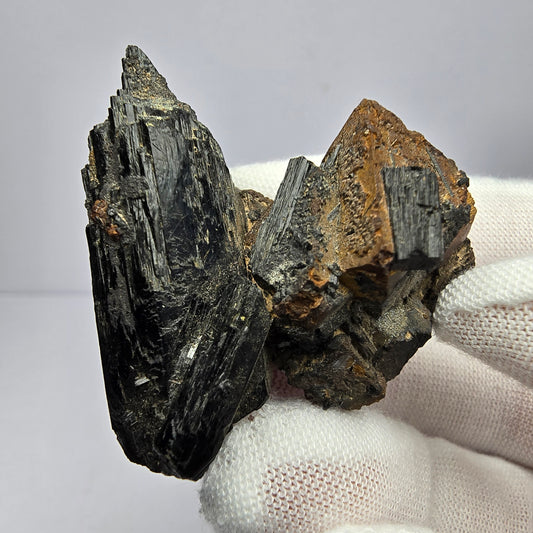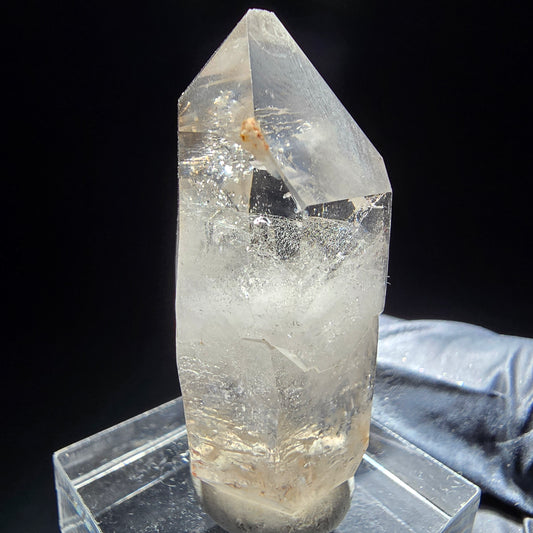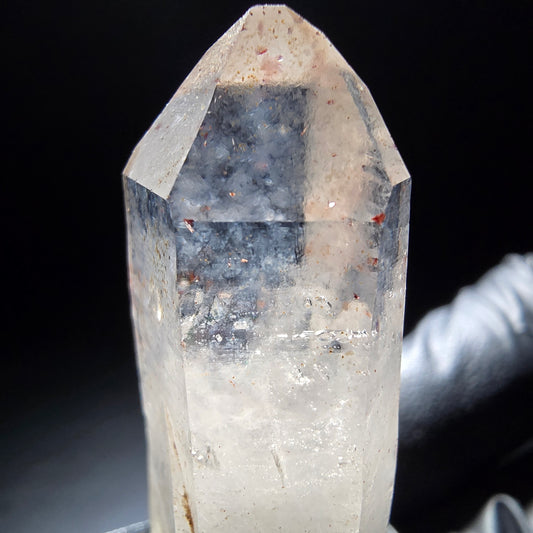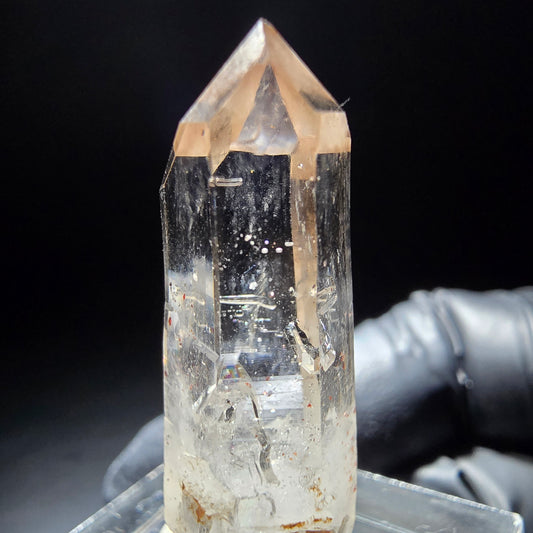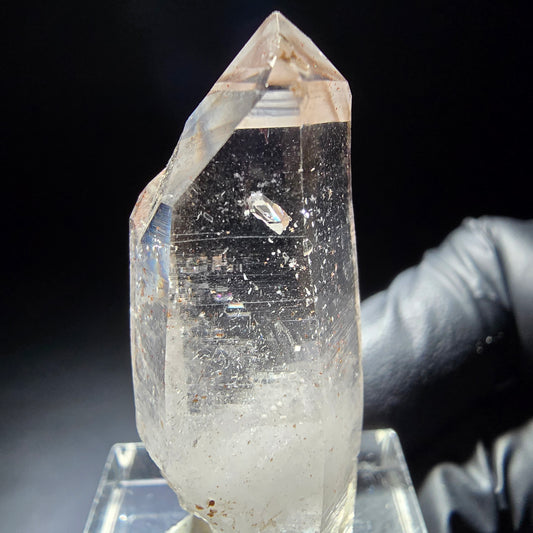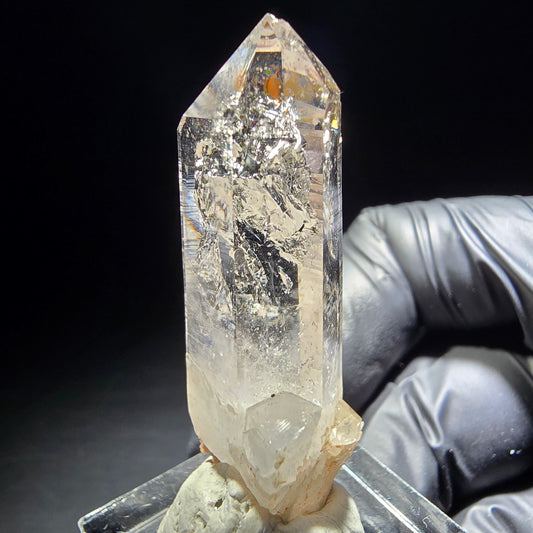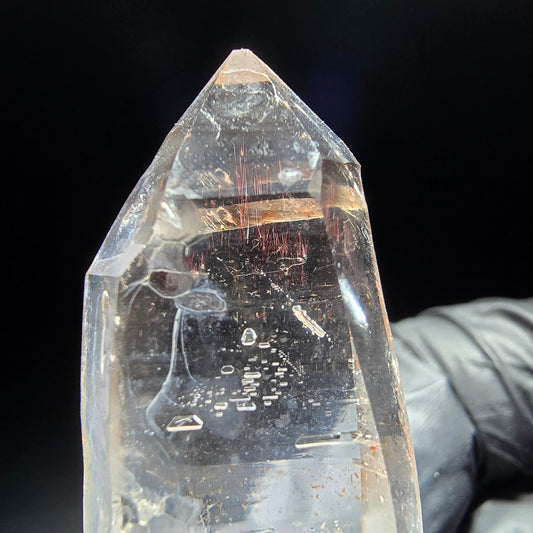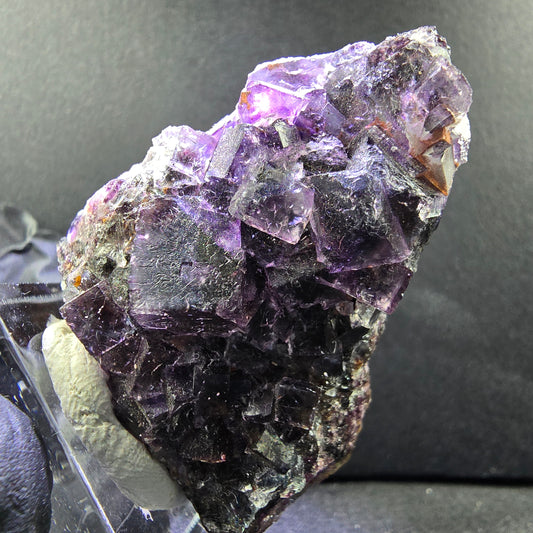-
Phantom Fluorite Cube, Red Iron Quartz Specimen Okorusu, Namibia 58*38*19mm
Regular price €58,90 EURRegular priceUnit price / per -
Enhydro Window Iron Smoky Quartz Scepter Large Bubble Valentine Pocket Namibia 88*64*36mm
Regular price €57,90 EURRegular priceUnit price / per -
Aquamarine, Schörl tourmaline, iron fluorite cube level Erongo Namibia 19*10*13mm
Regular price €23,09 EURRegular priceUnit price / per -
Phantom Fluorite Cube, Iron Smoky Quartz DT Specimen Erongo, Namibia 48*32*16mm
Regular price €11,09 EURRegular priceUnit price / per -
Clear Phantom Smoky Quartz Iron Point Goboboseb, Namibia 41*12*10mm
Regular price €13,49 EURRegular priceUnit price / per -
Clear Phantom Smoky Quartz Iron Point Goboboseb, Namibia 35*12*7mm
Regular price €9,19 EURRegular priceUnit price / per -
Rare Phantom Smoky Quartz Iron Scepter Crystal Goboboseb, Namibia 42*15*14mm
Regular price €17,89 EURRegular priceUnit price / per -
Harlequin Smoky Quartz with Iron DT Formation Goboboseb Namibia 62*18*13mm Collection
Regular price €15,29 EURRegular priceUnit price / per -
Phantom Amethyst with red iron Goboboseb, Namibia 45*14*9mm Mineral collection
Regular price €5,99 EURRegular priceUnit price / per -
Phantom Amethyst Scepter with red iron Goboboseb, Namibia 44*11*9mm Collection
Regular price €9,99 EURRegular priceUnit price / per -
Enhydro Phantom Smoky Quartz Iron Tip 1x Bubble Goboboseb, Namibia 47*22*13mm
Regular price €12,19 EURRegular priceUnit price / per -
Schorl Tourmaline, Iron Fluorite Octahedron Specimen Erongo Namibia 39*36*29mm Collection
Regular price €6,29 EURRegular priceUnit price / per -
Clear Phantom Smoky Quartz Iron Scepter Point Goboboseb Namibia 29*12*8mm
Regular price €7,79 EURRegular priceUnit price / per -
Clear Phantom Amethyst Smoky Quartz with Red Iron Goboboseb Namibia 37*15*11mm
Regular price €8,59 EURRegular priceUnit price / per -
Clear Phantom Amethyst Smoky Quartz with Red Iron Brandberg, Namibia 47*19*13mm
Regular price €7,79 EURRegular priceUnit price / per -
Clear Smoky Quartz Point with Red Iron Goboboseb Namibia 38*14*11mm Collection
Regular price €8,09 EURRegular priceUnit price / per -
Phantom Amethyst Scepter with Iron Tip Brandberg, Namibia 35*20*16mm Collection
Regular price €7,69 EURRegular priceUnit price / per -
Beautiful Fluorite Hexagon, Iron Schorl Tourmaline Specimen Erongo, Namibia 40*38*18mm
Regular price €9,19 EURRegular priceUnit price / per -
Phantom Smoky Quartz Double Terminated Iron Specimen Goboboseb, Namibia 41*17*13mm
Regular price €8,19 EURRegular priceUnit price / per -
Phantom Smoky Quartz Double Terminated Iron Specimen Goboboseb, Namibia 46*14*12mm
Regular price €5,99 EURRegular priceUnit price / per -
Clear Phantom Smoky Quartz with Iron Inclusions Goboboseb, Namibia 39*16*13mm
Regular price €7,49 EURRegular priceUnit price / per -
Clear Phantom Smoky Quartz with Iron Inclusions Goboboseb, Namibia 33*11*10mm
Regular price €5,19 EURRegular priceUnit price / per -
Clear Phantom Smoky Quartz with Iron Inclusions Goboboseb, Namibia 40*15*11mm
Regular price €8,19 EURRegular priceUnit price / per -
Clear smoky quartz point with orange iron Goboboseb, Namibia 46*16*16mm
Regular price €11,99 EURRegular priceUnit price / per -
Clear Phantom Smoky Quartz Iron Scepter Point Goboboseb, Namibia 48*20*10mm
Regular price €11,19 EURRegular priceUnit price / per -
Clear Smoky Quartz Scepter Point with Iron Goboboseb, Namibia 47*18*14mm Collection
Regular price €8,19 EURRegular priceUnit price / per -
Rare Phantom Fluorite XX specimen purple green with iron 40*36*23mm Okorusu, Namibia
Regular price €14,19 EURRegular priceUnit price / per
Collection: Iron quartz
Iron quartz from Namibia: Rare crystals with fascinating red deposits
Namibia is a country rich in geological treasures, and iron quartz is among the most impressive minerals found here. These rare crystals, characterized by their red iron oxide deposits, are both aesthetically and mineralogically fascinating. They are commonly found in the Goboboseb Mountains , Brandberg , and Erongo regions. In this blog post, you'll learn more about the formation, properties, and characteristics of these unique quartz crystals.
What are iron quartzes?
Iron quartz is a quartz crystal characterized by natural deposits of iron oxide (hematite or limonite). These iron deposits give the crystals a red to rust-brown color, making them sought-after collector's items. They come in several varieties:
- Smoky quartz : With smoky-brown coloring and red accents.
- Rock crystal : Clear and transparent, often with reddish inclusions.
- Phantom quartz : With visible growth layers and red iron deposits.
- Amethyst : With violet color and reddish shimmering inclusions.
The red deposits are caused by the oxidation of iron during crystal formation, which gives the quartz its characteristic look.
Locations in Namibia
Namibia is known for its high-quality iron quartz. The most important deposits are:
- Goboboseb Mountains : This region produces some of the finest smoky quartz and amethyst with intense red hematite deposits.
- Brandberg Massif : Famous for spectacular amethysts and rock crystals with reddish inclusions.
- Erongo Mountains : Here you can find both clear rock crystals and smoky quartz with impressive iron oxide patterns.
Formation of iron quartz
The formation of iron quartz is a complex geological process characterized by hydrothermal conditions:
- Hydrothermal solutions: Hot, mineral-rich fluids transport dissolved iron into cavities or geodes where quartz crystals grow.
- Oxidation: The dissolved iron oxidizes upon contact with oxygen, forming hematite or limonite. These minerals are deposited on the crystal faces or become trapped during growth.
- Coloring: The red tones are caused by the chemical composition of the iron (divalent or trivalent iron) and the growth conditions.
Some specimens also show phantoms or other inclusions such as gas bubbles (enhydros), which further enhances their beauty.
Properties of iron quartz
Iron quartz from Namibia is characterized by the following features:
- Crystal system: Trigonal – typical for quartz.
- Hardness: With a Mohs hardness of 7, they are robust and durable.
- Transparency: Many specimens are clear to translucent, with fascinating red inclusions.
- Rarity: Their natural iron oxide deposits make them sought-after collector's items.
- Aesthetics: The combination of shape, color and structure creates incomparable beauty.
Use and care
Iron quartz crystals make excellent collectibles or decorative pieces. To preserve their beauty:
- Carefully clean the crystals with water and a soft brush.
- Avoid harsh chemicals or strong sunlight.
- Store them safely to avoid scratches or breakage.
Conclusion
Iron quartz from Namibia is a true masterpiece of nature—rare, beautiful, and steeped in geological history. Whether smoky quartz, rock crystal, or amethyst, each of these crystals tells a unique story and fascinates with its red deposits. If you're looking for a special piece of nature, you should definitely discover these extraordinary minerals.
Visit our online shop and secure your own piece of Namibia!




